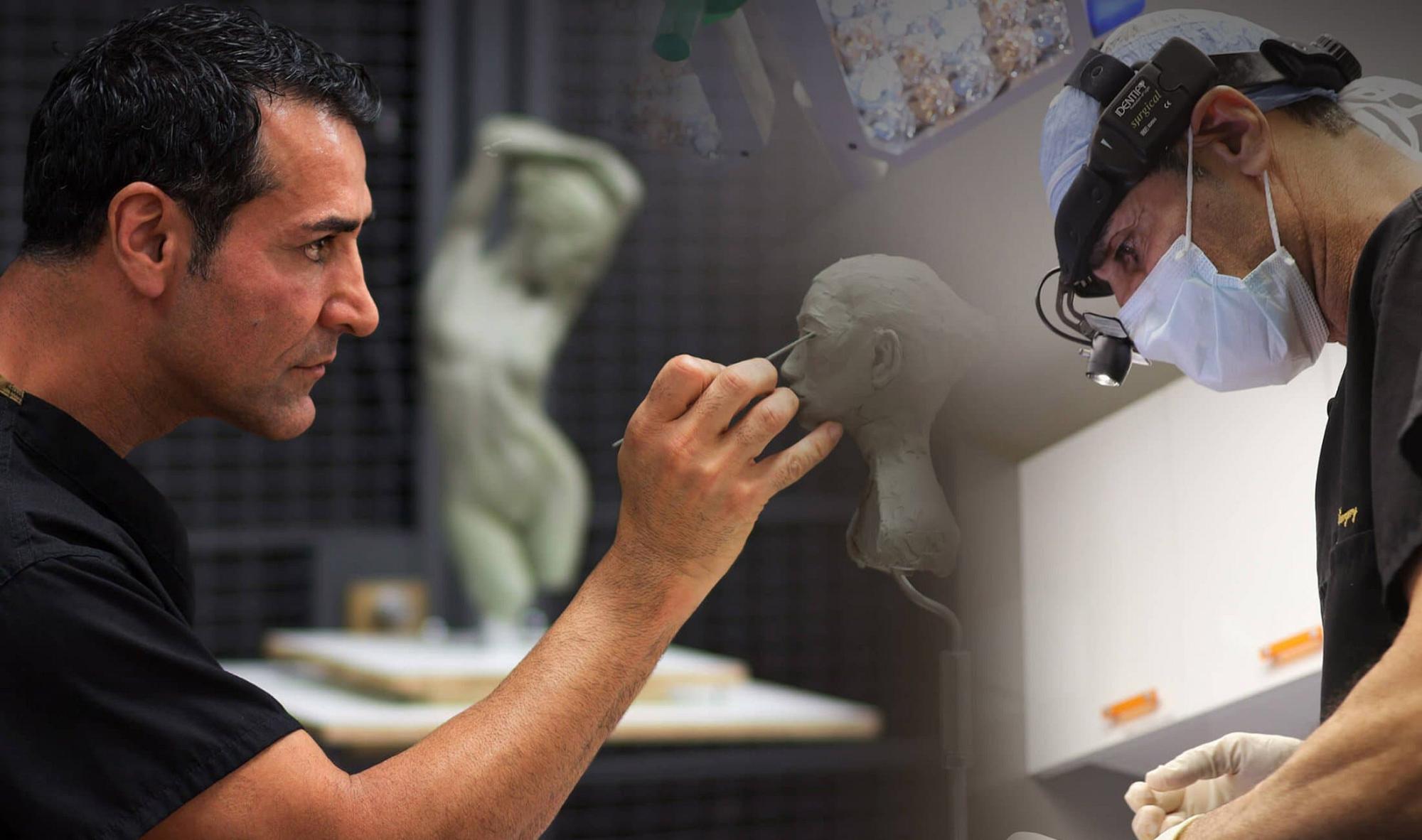

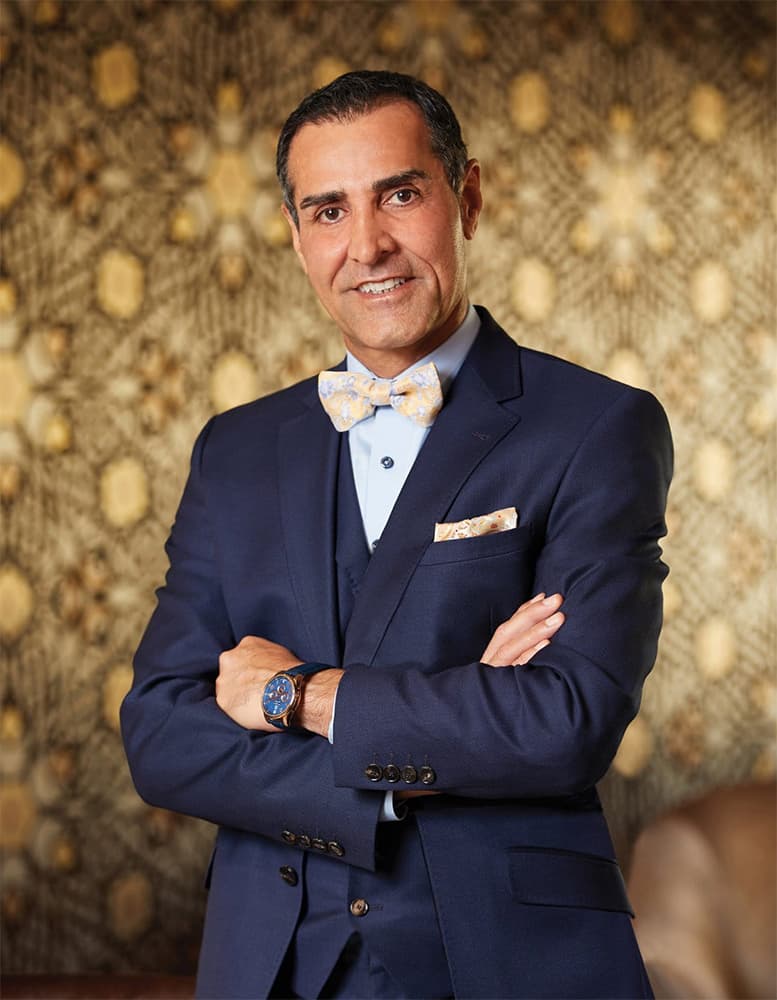
Dr. Kevin Sadati is a Board-Certified Newport Beach Facial Plastic Surgeon with more than 17 years of experience in facial rejuvenation surgery and has performed over 5000 facelift surgeries.
Dr. Sadati sets himself apart from other surgeons by partnering his unique blend of surgical finesse with his passion for the arts. As a trained sculptor and painter, Dr. Sadati combines his surgical understanding of human anatomy with his artistic eye to create a harmonious, natural-looking result for each patient. This rare combination of talents has earned Dr. Sadati a high level of respect and esteem among his peers; and love, admiration, and appreciation from his patients. Dr. Kevin Sadati is a nationally known facelift surgeon, who has been invited to premier national and international plastic surgery conventions to present his facelift techniques.
From 1997 to 2014 the American Society for Aesthetic Plastic Surgery (ASAPS) has compiled data from board plastic surgeons and otolaryngologists to compare what the national average is for each cosmetic procedure. Over the past ten years, Dr. Kevin Sadati himself has compiled averages, which reflect him to be well above these national averages.
| Surgical Procedures | National Average* | Dr. Kevin Sadati** |
|---|---|---|
| Face Lift | 7.0 | 220 |
| Neck Lift | 2.0 | 165 |
| Rhinoplasty | 8.1 | 52 |
| Eyelid Surgery | 9.2 | 102 |
One of the main differences between a deep plane facelift and a traditional facelift is how the SMAS is treated. In a SMAS lift, mobile SMAS tissue is folded over itself and sutured to a non-mobile SMAS. With a deep plane facelift, the SMAS is entered at deeper layers, and all the ligaments that hold the loose and sagging portion of the face are released. This allows the surgeon to mobilize the underlying tissues and reposition them to a more vertical and lifted position, resulting in a more natural-looking lift.
In contrast, the traditional facelift ligaments are not released; therefore, there are restriction points that limit the lift. Another advantage of a deep plane facelift to SMAS lift is the elevation of the midface and reducing the deep nasolabial folds. Recovery times can also vary. Since more tissue elevation is involved during a deep plane facelift, it involves more swelling, leading to slightly longer recovery. However, deep-plane facelift results are often more long-lasting than those of a traditional facelift. There is less scaring involved with Deep Plane Facelift since there is no tension on the skin.
Deep Plane lift is performed under IV sedation (twilight sedation) without the need for intubation with general anesthesia, which is much safer and has a significantly shorter postoperative recovery time.
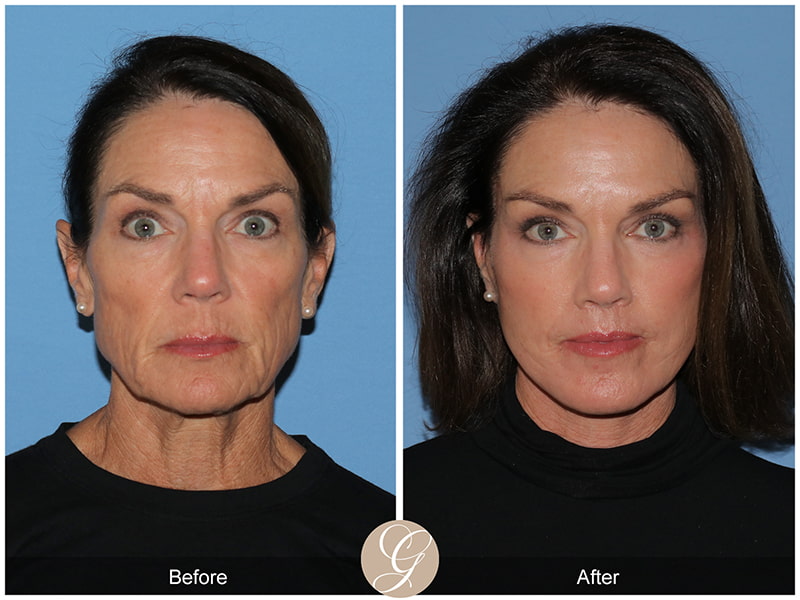
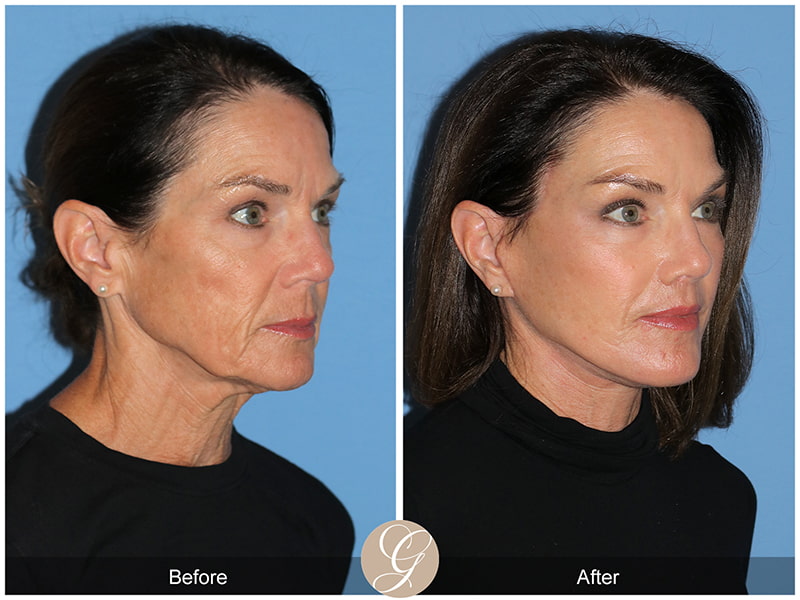
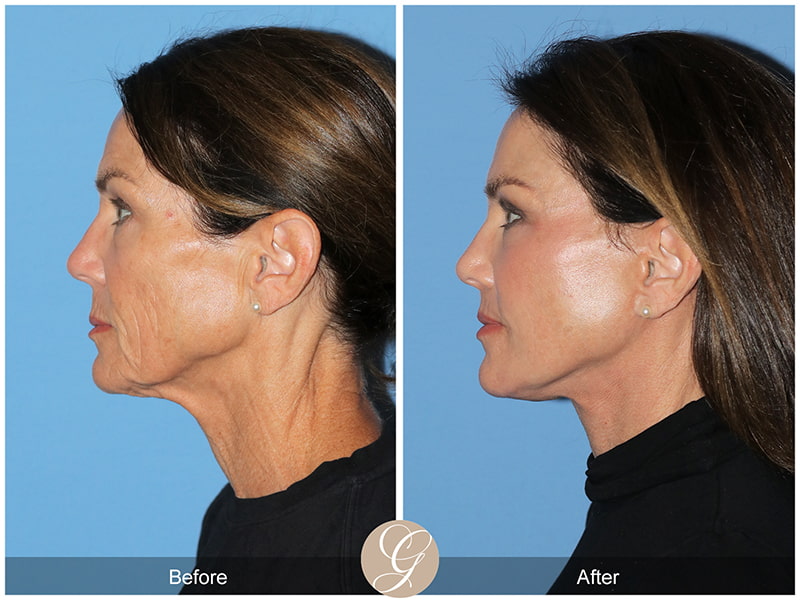
Dr. Kevin Sadati has developed and published a special extended SMAS facelift procedure that has garnered him a great deal of notoriety in the facial plastic surgery field; because of this breakthrough facial muscle tightening technique, he has had the ability to provide people with a great deal of facial rejuvenation while remaining very natural.
The technique is called the "Triple C" SMAS Plication technique. His Newport Beach natural facelift technique has been published in the American Journal of Plastic Surgery and is utilized by many other plastic surgeons. He has performed thousands of this technique and presented it in many international plastic surgery meetings. This technique applies a uniform tension on the facial muscles to create a smooth and natural look. What can happen with a traditional full facelift is that a patient's appearance will not look like themselves, and people notice. This more natural lift will not give you a "pulled" look around the eyes or mouth, nor will there be any tissue bunching at the hairline. In addition, this procedure will provide an excellent lift for the jowl and neck region.
The lift that occurs on the lower portion of the face will improve any degree of skin laxity on the neck. This technique provides durable, natural-looking results with a relatively easy and quick recovery. Most importantly, this procedure is done under local anesthesia and twilight sedation, rather than general anesthesia.
The limit to this procedure is that mid face cannot be lifted since the facial ligaments are not released, rather the SMAS is folded in three layer and the lower portion of the face and neck.
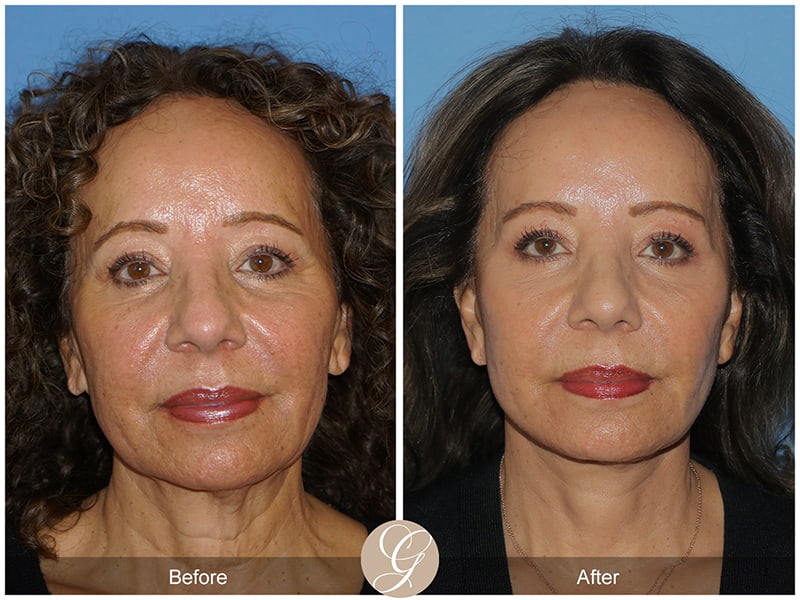
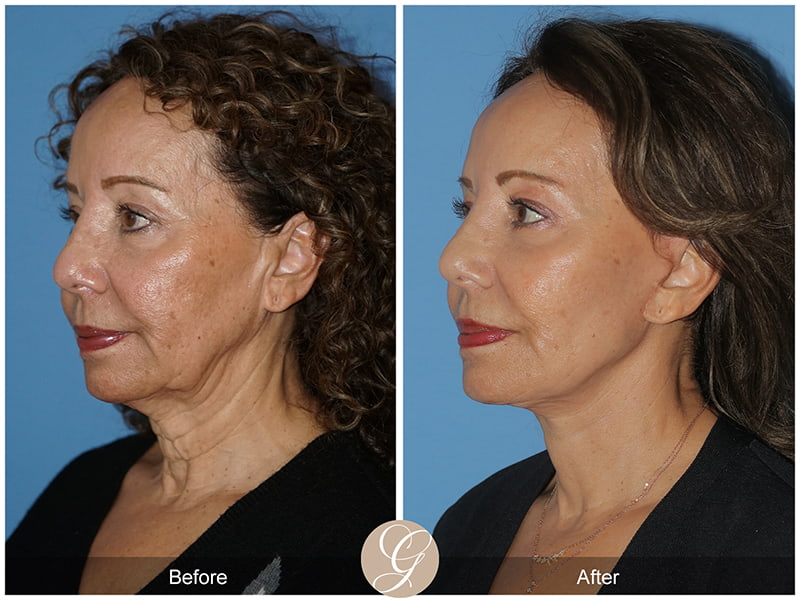
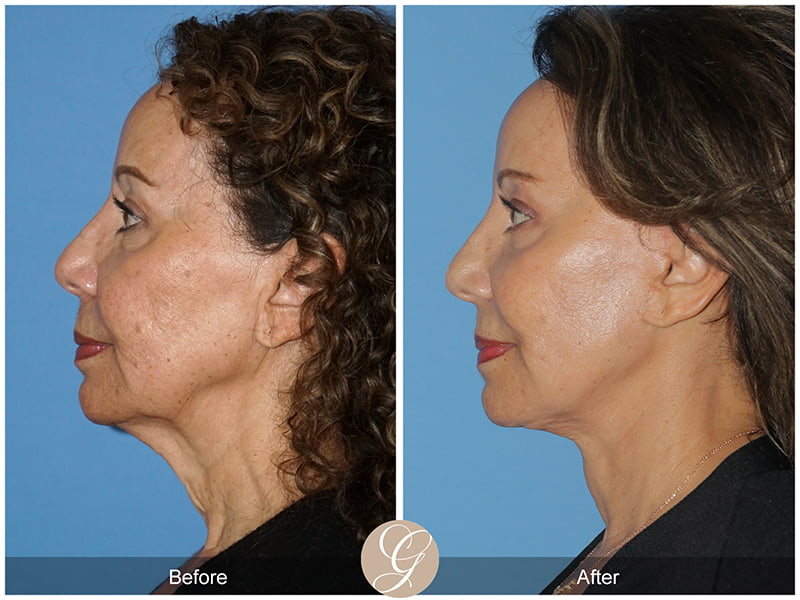
As we age, the face slowly transforms from a heart shape to that of a rectangular shape. This change occurs as the fascia in the face (also known as the "SMAS") starts to elongate, or droop and descend. This leaves the face looking different than it did during youth and is responsible for that visible change in the aging face.
A vertical facelift is a comprehensive facial rejuvenation technique that combines a temporal brow lift with a deep plane face and neck lift. This procedure lifts the lateral upper face, lower face, and neck, resulting in a more youthful, balanced appearance.
The most basic points of contrast are that the lift is vertically oriented, not horizontally, which is a major reason for the natural look. Additionally, the Vertical facelift addresses the entire face and not just a portion of it, simultaneously rejuvenating the outer brow, midface, jawline, and neck. A traditional facelift only addresses the jawline by pulling it toward the ears.
Vertical lift is performed under IV sedation (twilight sedation) without the need for intubation with general anesthesia, which is much safer and has a significantly shorter postoperative recovery time.
Since this procedure requires deeper tissue lift and is more complex, the recovery is slightly longer than a traditional facelift, but the results are far more longer lasting.
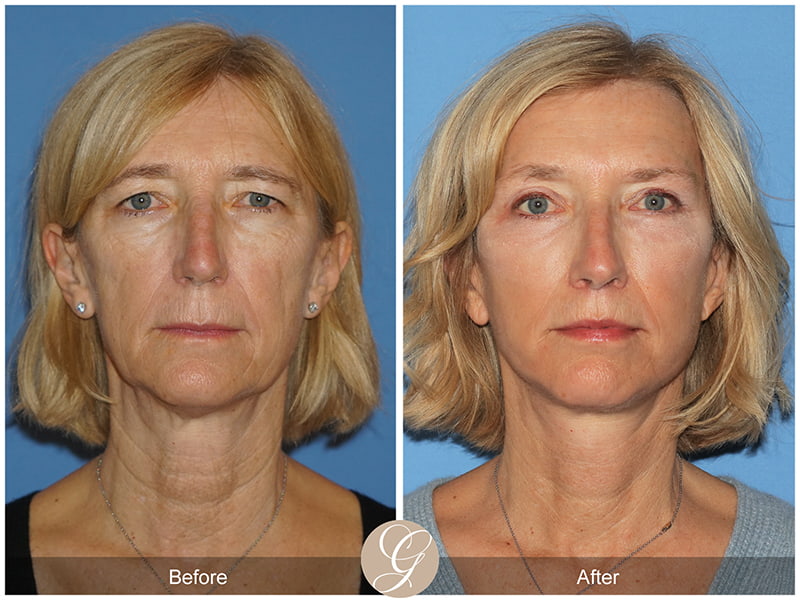
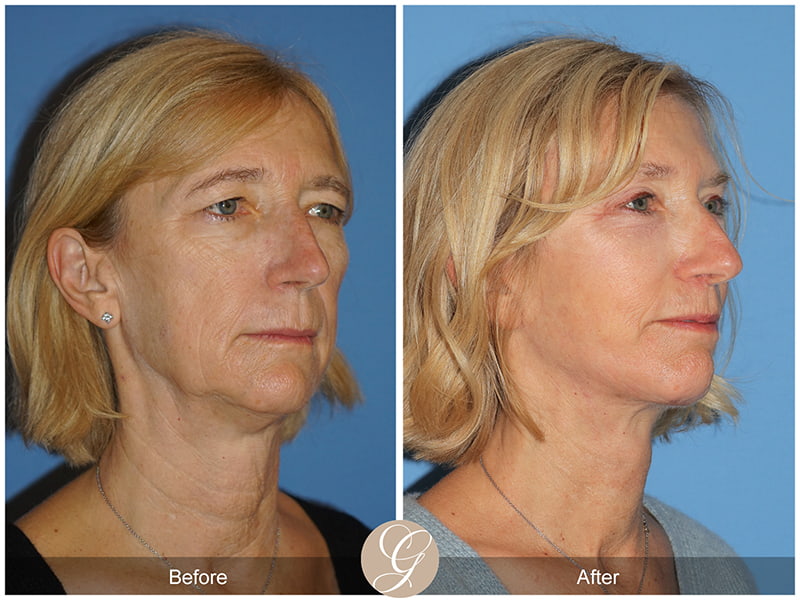
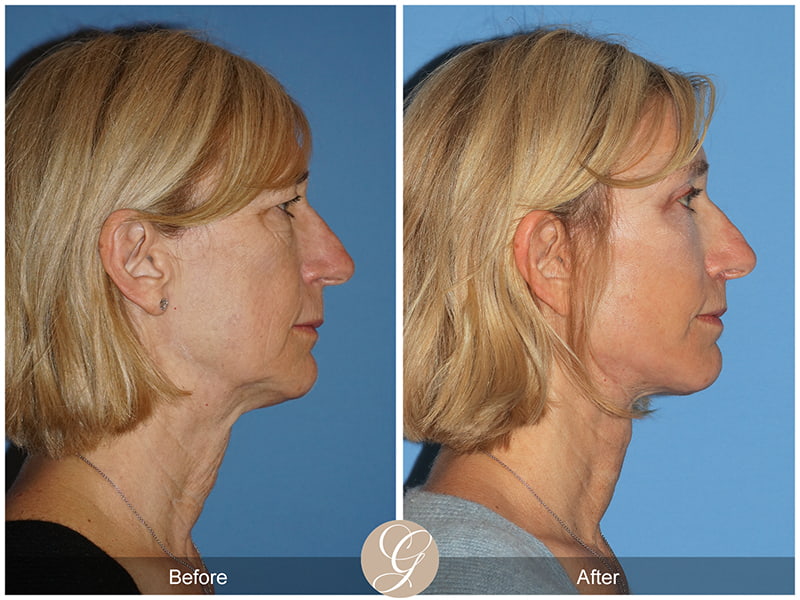
As men get further and further along in their career, the stress of the job can begin to take its toll on their face. Because it is so important in this day in age to appear young, vibrant, and energetic, many men are turning to facial rejuvenation surgery so that they look as young as they feel. Many who are physically fit and have a young body and mind, yet their face doesn't match You may be curious about what is different between a facelift performed on a man versus one performed on a woman.
Dr. Kevin Sadati often tells his patients that while the surgical techniques used in a facial rejuvenation vary little between men and women, men's goals and anatomy are different. Men want to ensure that their face looks natural and masculine, rather than appearing heart-shaped or feminized. Men are more concerned about their neck laxity and jowls than cheeks and forehead.
Men also want to minimize visible scarring. The surgeon must skillfully hide incisions to accommodate short haircuts, receding hairlines and baldness.
Another unique concern for male patients is facial hair. The thickness, color and location of hair follicles must be factored into the surgery.
Additionally, the surgeon must choose incision locations that will not impair the ability to shave. To support the growth of facial hair, men have more facial blood vessels than women. This increases the chance of bleeding and bruising. In addition, surgery can take longer because men have larger faces, heavier necks, and stronger ligament supports. These anatomical differences can make the male facelift more challenging and requires the talent of an experienced surgeon who has vast experience with male facial rejuvenation.
Finally, men have different emotional needs than women. Men are not used to altering their appearance, so need to have realistic expectations for the surgery and recovery process. Men also tend to be much more private about their decision to have a facelift, so will want to choose a surgeon who accommodates their need for discretion.
A male facelift is performed in the comfort of our state of art facility using twilight sedation and local anesthesia without the need for intubation with general anesthesia.
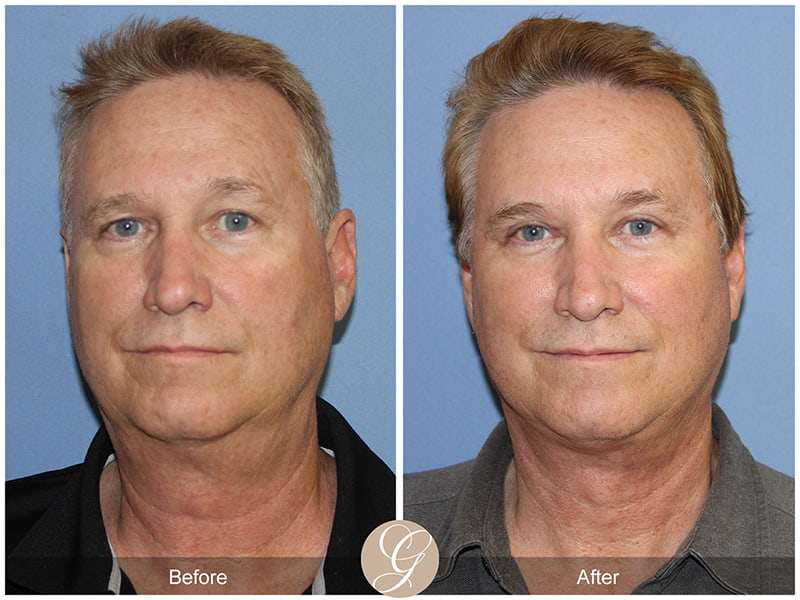
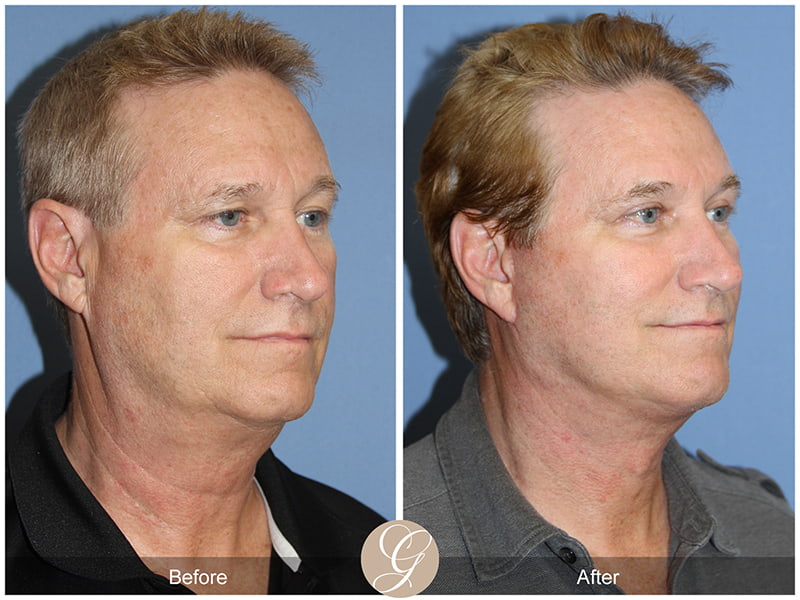
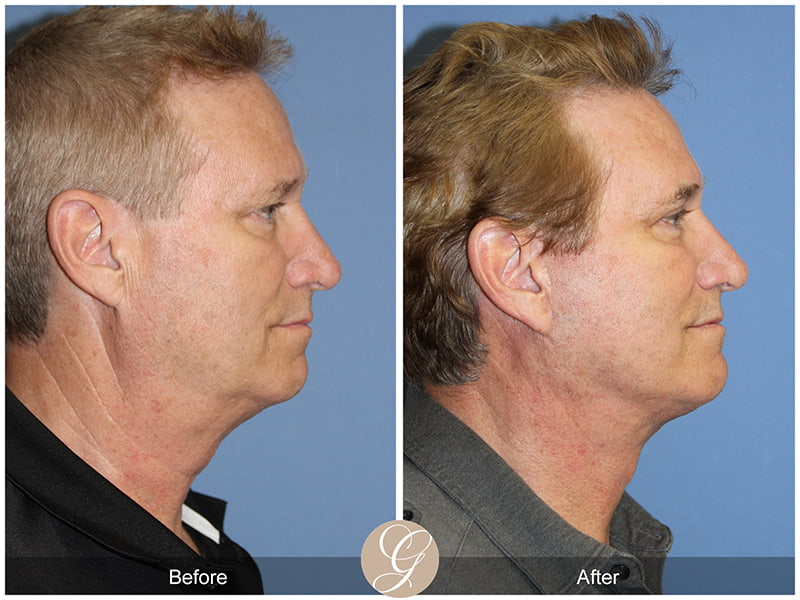
The next generation of
Each face is unique and so is its aging process. Dr. Sadati has developed and mastered a wide range of techniques to achieve the desired results that best suit each patient's anatomy and goals. There is no one-size-fits-all procedure that is right for everyone. Dr. Sadati uses his holistic approach and experience to decide the best surgical technique for each patient. For example, a patient with slight facial aging may require a mini facelift, while a patient with moderate aging of the face and neck would benefit from a Triple SMAS Plication facelift (developed by Dr. Sadati). A patient with severe laxity of the lower face, neck, and mid-face will require a deep plane or an extended deep plane face and neck lift.
Additional Procedures: Other areas of the face, such as upper lid laxity, puffiness under the eyes, droopy brows, elongated upper lip, lack of facial volume, and deep facial wrinkles can contribute to the appearance of an aging face. Dr Sadati performs eyelid surgery, brow lift, lip lift, fat grafting, and CO2 laser resurfacing to complement your facelift while creating harmonious and youthful results. The additional procedures are added by patient request as well as Dr Sadati's recommendations.
Dr. Sadati's patients look refreshed and appear naturally more youthful and rested. Most patients are happy and relieved when their friends, family, and colleagues do not realize that they have had a cosmetic procedure done; but do recognize an improvement in their overall appearance.

Facial Rejuvenation procedures start at $45,000, and the final quote depends on the facial needs of the patient. Many factors can affect pricing, such as the amount of time needed in the operating room, if additional procedures are added (e.g., CO2 laser, facial fat grafting, eyelid surgery, brow lift, etc.), the severity of aging, and the surgical technique. A mini facelift is less expensive than a Deep Plane Facelift, Deep Plane Neck lift, or a complex case with multiple procedures added on.
Even though we strive to offer our services at the best rates possible for the professional services we provide, some patients may wish to spread this cost over several payments and there are many excellent financing options available. We have provided links to some of these companies that are happy to help you through the financial aspects of any cosmetic procedure you decide to have done with us. They can present you with a wide range of financing options to fit your needs and are more than happy to work with you to find a program that is perfect for your needs.
Having financing secured before you decide on what procedures you want takes some of the pressure out of the decision and allows you to get the treatment you need on your schedule. The financing options are CareCredit and PatientFi.
Certainly! Facial rejuvenation surgery can indeed be performed without the use of general anesthesia. Dr. Sadati has extensive experience in conducting such procedures using a technique called IV sedation, also known as twilight sedation, in combination with local anesthesia. This approach ensures that the procedure is painless for the patient and eliminates potential complications associated with intubation, which is required during general anesthesia.
Traveling post-surgery depends on how quickly the patient is recovering. In general, a 2-week wait period is recommended. Dr. Sadati and staff will assist you to decide when the appropriate time is to fly. If you are an out of town patient, try to find comfortable accommodation in the beautiful city of Newport Beach to rest and recover.
A certain level of discomfort is normal and expected after any surgery. Patients are comfortable during surgery, whether the procedure is performed under general anesthesia or with IV sedation. Dr. Sadati injects the face and neck with long lasting numbing solutions that most patients often describe sensations as tightness, soreness, or discomfort that is easily managed by oral pain medication, such as extra strength Tylenol or mild narcotics. Many patients have reported not requiring prescription pain medication after facelift surgery.
Strenuous activities or exercise after plastic surgery will increase the risk of bleeding, swelling and bruising. Activity restriction during the recovery period varies based on the surgical procedures performed and the patient's medical conditions. Light activities, such as slow walking, may be done soon after. Heavy activities, such as aerobics, yoga, cycling, running, heavy lifting, or similar vigorous activity are allowed 4 weeks after the procedure. Contact sports are generally allowed after 6 weeks.
Most patients plan at least 8 days off from work after plastic surgery but that depends on your level of comfort and lifestyle. For example, remote work can be resumed a few days after surgery. More recovery time may be necessary for combined procedures such as eyelid surgery and forehead lift.
Surgical facelifts vary depending on the specific needs of the patient and surgery. The length of surgery depends on the complexity and number of procedures being performed. During your consultation for your Natural Facelift Newport Beach facial plastic surgeon, Dr. Kevin Sadati, will discuss the length of your individual procedure with you at your consultation, the surgery takes about 4-6 hours.
Every patient will recover at a unique rate. On average, patients are "back to normal" approximately 2 weeks after facial rejuvenation surgery. Patients have already returned to work by this time. For several days after surgery, icing and a gentle elastic neck wrap is worn to minimize swelling. The healing process is gradual, during the first couple of months after surgery, residual swelling continues to resolve, and skin softens. This residual swelling is often noticeable by the patient only.
Driving is generally avoided during the first week after facial rejuvenation surgery because the neck may feel stiff or tight while turning your head initially. Numbness, especially around the ears, is common and normally resolves with time.
The last phase of healing takes several months to a year, as gradual changes continue to occur in the skin and tissue. Any external scars and residual mild swelling continue to fade. Patients should continue healthy habits to maintain their aesthetic results, such as eating a healthy diet, routinely exercising, avoiding excess salt or processed foods, using consistent sun protections, using medical grade skincare, avoiding smoking, and getting adequate sleep.
Sutures are removed within 8 days after surgery.
The immediate swelling after facelift surgery may last approximately 1-2 weeks, depending on several factors. After this initial healing period, swelling is still present, but usually only noticeable by the patient. The very last tiny bit of swelling takes several months to gradually dissolve.
It's possible to have swelling in areas of the face and eyes adjacent to the surgery site even though surgery was not performed directly in those areas. This extension of facial swelling is due to gravity and the natural movement of fluid in the tissues. In addition, keep in mind that the eyelids, face, and nose are very sensitive to swelling from other factors, such as allergies, diet hormones, sleep, etc.
The procedure can erase up to ten years or more from your appearance almost instantly; however, the normal aging process will resume. Many factors, including skin type, sun exposure and genetics play a role in determining how long the desired result will last.
Facelift
Lip Lift. Eyelid Lift. Brow Lift. Fat Grafting. CO2 Laser. Buccal Fat.
359 San Miguel Dr, Suite 200, Newport Beach, CA 92660
Clients from around the globe travel to see Dr. Sadati for his surgical expertise. He and his surgical team provide the highest standard of patient care, from the initial consultation, to complete recovery and conclusion of your care. Our friendly staff is available to accommodate you in any way that we can.
What procedure are you interested in?